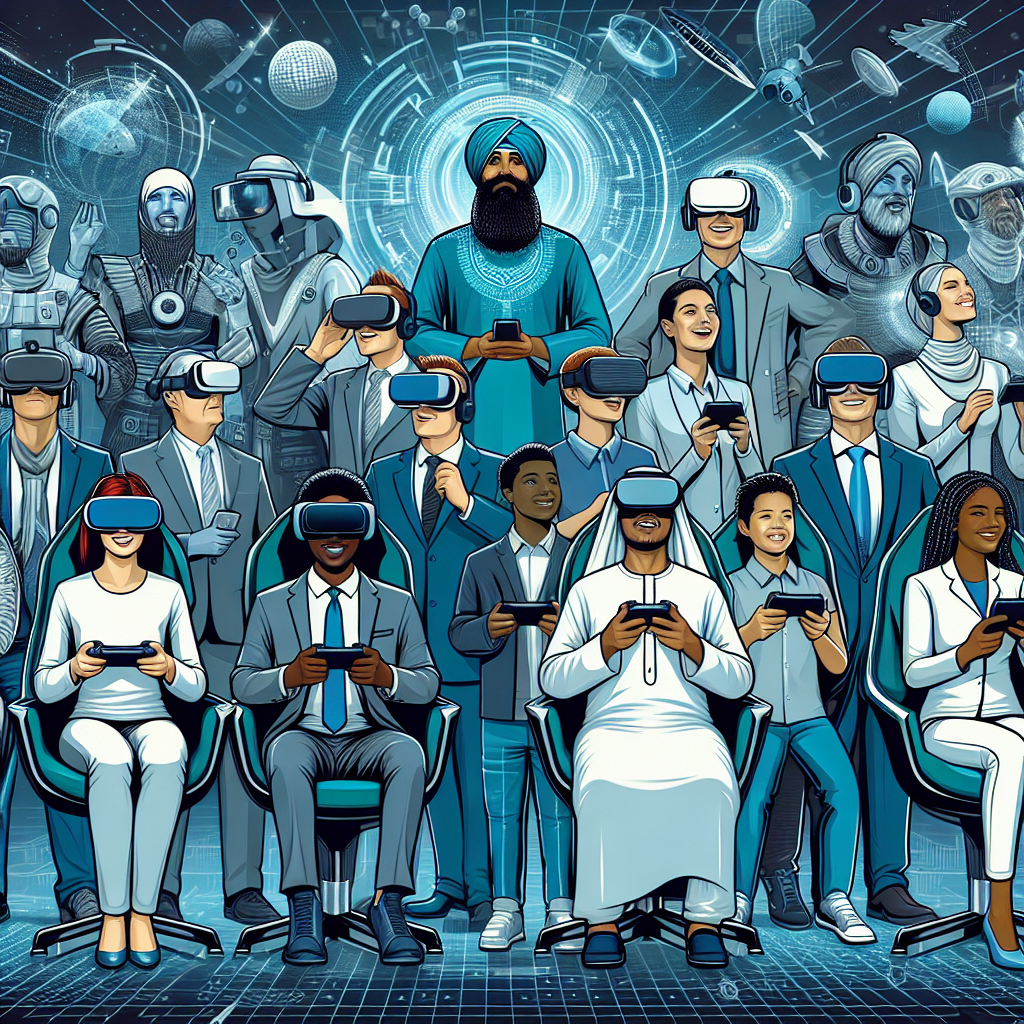
The Impact of AI on Healthcare: Revolutionizing Diagnosis and Treatment
The Impact of AI on Healthcare: Revolutionizing Diagnosis and Treatment
Artificial Intelligence (AI) has been making waves in various industries, and one area where its impact is particularly significant is healthcare. Machine learning, a subset of AI, is revolutionizing the way we diagnose and treat diseases. With its ability to analyze vast amounts of data and identify patterns, AI is helping doctors make more accurate diagnoses and develop personalized treatment plans.
One of the key benefits of AI in healthcare is its ability to analyze medical images. Traditionally, doctors have relied on their expertise and experience to interpret X-rays, CT scans, and MRIs. However, AI algorithms can now analyze these images with incredible precision, detecting even the smallest abnormalities that may be missed by human eyes. This not only saves time but also improves the accuracy of diagnoses, leading to better patient outcomes.
In addition to image analysis, AI is also transforming the field of pathology. Pathologists play a crucial role in diagnosing diseases by examining tissue samples under a microscope. However, this process can be time-consuming and prone to human error. AI algorithms can now analyze digital images of tissue samples and identify abnormalities with remarkable accuracy. This not only speeds up the diagnosis process but also reduces the risk of misdiagnosis, ultimately improving patient care.
Another area where AI is making a significant impact is in the development of personalized treatment plans. Traditionally, doctors have followed a one-size-fits-all approach when it comes to treatment. However, every patient is unique, and what works for one may not work for another. AI algorithms can analyze a patient’s medical history, genetic information, and lifestyle factors to develop personalized treatment plans. This not only improves the effectiveness of treatment but also reduces the risk of adverse reactions to medications.
AI is also helping doctors stay up-to-date with the latest medical research. With the exponential growth of medical literature, it is impossible for doctors to keep track of all the new studies and findings. AI algorithms can analyze vast amounts of medical literature and extract relevant information, helping doctors stay informed about the latest advancements in their field. This not only improves the quality of care but also saves doctors valuable time that can be spent with patients.
Furthermore, AI is playing a crucial role in predicting and preventing diseases. By analyzing large datasets, AI algorithms can identify patterns and risk factors that may lead to the development of certain diseases. This allows doctors to intervene early and take preventive measures to reduce the risk of disease progression. For example, AI algorithms can analyze a patient’s medical history, lifestyle factors, and genetic information to predict the likelihood of developing conditions such as diabetes or heart disease. This enables doctors to develop personalized prevention plans, including lifestyle modifications and targeted screenings.
In conclusion, AI is revolutionizing the field of healthcare by transforming the way we diagnose and treat diseases. From analyzing medical images with incredible precision to developing personalized treatment plans, AI is improving patient outcomes and reducing the risk of human error. Additionally, AI is helping doctors stay up-to-date with the latest medical research and predict and prevent diseases. As AI continues to advance, its impact on healthcare is only expected to grow, leading to more accurate diagnoses, personalized treatments, and ultimately, better patient care.
AI in Finance: Enhancing Efficiency and Predictive Analytics
Artificial intelligence (AI) has become a buzzword in recent years, and for good reason. The rise of machine learning, a subset of AI, has transformed various industries, including finance. In this article, we will explore how AI is enhancing efficiency and predictive analytics in the finance sector.
One of the key areas where AI is making a significant impact is in automating repetitive tasks. Traditionally, financial institutions have relied on manual processes for tasks such as data entry, reconciliation, and report generation. These tasks are not only time-consuming but also prone to human error. With the advent of AI, machine learning algorithms can now handle these tasks with greater accuracy and efficiency.
By automating these processes, financial institutions can free up their employees’ time to focus on more strategic and value-added activities. This not only improves overall efficiency but also allows employees to utilize their skills and expertise in more meaningful ways. For example, instead of spending hours manually inputting data, employees can now analyze and interpret the data to make informed decisions.
Furthermore, AI is revolutionizing predictive analytics in the finance industry. Machine learning algorithms can analyze vast amounts of historical data to identify patterns and trends that humans may not be able to detect. This enables financial institutions to make more accurate predictions about market trends, customer behavior, and investment opportunities.
For instance, AI-powered algorithms can analyze market data and news articles to identify potential investment opportunities. By considering various factors such as historical performance, market sentiment, and economic indicators, these algorithms can provide valuable insights to investors. This not only helps investors make informed decisions but also reduces the risk of making poor investment choices.
In addition to enhancing predictive analytics, AI is also improving risk management in the finance sector. Machine learning algorithms can analyze historical data to identify potential risks and anomalies. By continuously monitoring and analyzing data in real-time, these algorithms can alert financial institutions to potential risks and help them take proactive measures to mitigate them.
Moreover, AI is also transforming customer experience in the finance industry. Chatbots powered by AI can provide personalized and real-time assistance to customers, answering their queries and providing relevant information. This not only improves customer satisfaction but also reduces the burden on customer service representatives.
Furthermore, AI-powered algorithms can analyze customer data to identify patterns and preferences, allowing financial institutions to offer personalized recommendations and tailored products and services. This not only enhances customer experience but also increases customer loyalty and retention.
In conclusion, AI is revolutionizing the finance industry by enhancing efficiency and predictive analytics. By automating repetitive tasks, financial institutions can improve overall efficiency and free up employees’ time for more strategic activities. AI-powered algorithms are also transforming predictive analytics, enabling financial institutions to make more accurate predictions and informed decisions. Additionally, AI is improving risk management and customer experience in the finance sector. As AI continues to advance, we can expect further transformations in the finance industry, ultimately benefiting both financial institutions and their customers.
AI in Manufacturing: Streamlining Operations and Improving Quality Control
The rise of artificial intelligence (AI) has brought about significant changes in various industries, and manufacturing is no exception. Machine learning, a subset of AI, has proven to be a game-changer in streamlining operations and improving quality control in the manufacturing sector. In this article, we will explore how AI is revolutionizing the manufacturing industry and the benefits it brings.
One of the key areas where AI is making a significant impact is in streamlining operations. Traditionally, manufacturing processes have been labor-intensive and time-consuming. However, with the advent of AI, machines can now be programmed to perform complex tasks with precision and efficiency. This not only reduces the need for human intervention but also speeds up production cycles, resulting in increased productivity and reduced costs.
Machine learning algorithms can analyze vast amounts of data to identify patterns and make predictions. In manufacturing, this capability is particularly useful in optimizing production schedules and inventory management. By analyzing historical data, AI systems can predict demand patterns and adjust production accordingly, ensuring that the right products are available at the right time. This not only minimizes inventory holding costs but also reduces the risk of stockouts and lost sales.
Furthermore, AI-powered robots can be used to automate repetitive and mundane tasks on the factory floor. This not only frees up human workers to focus on more complex and creative tasks but also reduces the risk of human error. Robots can perform tasks with precision and consistency, resulting in higher product quality and fewer defects. This, in turn, leads to improved customer satisfaction and reduced costs associated with rework and warranty claims.
Quality control is another area where AI is transforming the manufacturing industry. Traditionally, quality control has relied on manual inspection, which is time-consuming and prone to errors. However, with AI, manufacturers can now use computer vision systems to automatically inspect products for defects. These systems use machine learning algorithms to analyze images and identify anomalies, such as scratches or misalignments. By automating the inspection process, manufacturers can significantly improve the accuracy and speed of quality control, resulting in higher product quality and reduced waste.
In addition to streamlining operations and improving quality control, AI is also enabling manufacturers to develop new and innovative products. Machine learning algorithms can analyze customer data and market trends to identify unmet needs and opportunities. This allows manufacturers to tailor their products to specific customer segments and stay ahead of the competition. For example, AI can be used to develop personalized products or create new product features based on customer preferences. By leveraging AI, manufacturers can not only meet customer demands but also drive innovation and growth.
In conclusion, AI and machine learning are revolutionizing the manufacturing industry by streamlining operations and improving quality control. By automating tasks, optimizing production schedules, and automating quality control, manufacturers can increase productivity, reduce costs, and improve product quality. Furthermore, AI enables manufacturers to develop new and innovative products that meet customer demands and drive growth. As AI continues to advance, we can expect even more transformative changes in the manufacturing industry, making it more efficient, competitive, and customer-centric.


Pingback: Virtual Reality: The Next Frontier in Consumer Experience – Just another WordPress site
Pingback: The Internet of Things (IoT): Transforming Everyday Life – Just another WordPress site
Pingback: Augmented Reality: The New Frontier in User Experience – Just another WordPress site
Pingback: Blockchain Beyond Bitcoin: Disrupting Traditional Industries – Just another WordPress site
Pingback: Beyond Google: Alternative Search Engines and SEO Strategies – Just another WordPress site